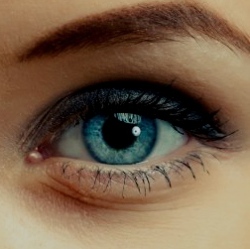
Research has resulted in the creation of a stretchable nano-scale device which can be used to manipulate light and develop smart contact lenses. The device manipulates light to such an extent that it can filter colours while still being transparent and could be used to make smart contact lenses.
Research activities were conducted at RMIT’s Micro Nano Research Facility which is a state-of-the-art science facility.This study is published in the micro- and nano-science journal ACS Nano and supported by the Australian Research Council.
The new device can filter out certain colors without losing its transparency; and it could also be developed into a high-tech lens that can filter out harmful optical radiation without interfering with vision, or furthermore developed to gather vital information and transmit data via displays.
The light manipulation relies on creating tiny artificial crystals termed “dielectric resonators”, which are a fraction of the wavelength of light, 100-200 nanometers, or over 500 times thinner than a human hair.
“With advanced techniques to control the properties of surfaces, we can dynamically control their filter properties, which allow us to potentially create devices for high data-rate optical communication or smart contact lenses.
“The current challenge is that dielectric resonators only work for specific colours, but with our flexible surface we can adjust the operation range simply by stretching it.”
“We embed precisely-controlled crystals of titanium oxide, a material that is usually found in sunscreen, in these soft and pliable materials,”.
“Both materials are proven to be bio-compatible, forming an ideal platform for wearable optical devices.
“By engineering the shape of these common materials, we can create a device that changes properties when stretched. This modifies the way the light interacts with and travels through the device, which holds promise of making smart contact lenses and stretchable colour changing surfaces.”
“With this technology, we now have the ability to develop light weight wearable optical components which also allow for the creation of futuristic devices such as smart contact lenses or flexible ultra thin smartphone cameras,” said lead author Dr. Phillip Gutruf.
